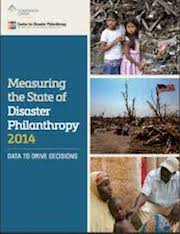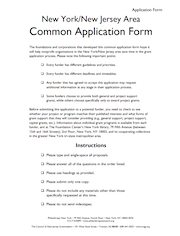Site Search
- resource provided by the Forum Network Knowledgebase.
Search Tip: Search with " " to find exact matches.

"Co-Creation" is a case study about the Connecticut Early Childhood Funder Collaborative, a project of the Connecticut Council for Philanthropy. The case study, written by Patricia Bowie, examines co-creation, an emerging systems change collaboration model which grew out of a funder-and-state partnership. This unique partnership led to the creation by executive order of a new and independent Office of Early Childhood, which was formally approved by the Connecticut State Legislature in 2013. The companion piece, "Taking on New Roles to Address 21st Century Problems," looks at co-creation from the perspective of a regional association of grantmakers.
The Connecticut Early Childhood Funder Collaborative comprises 14 funders from around the state who bring many years of experience in supporting and operating programs that serve the needs of children and families.

CNJG, in partnership with the Center for Nonprofits, is thrilled to invite you to a virtual launch event to celebrate the debut of the New Jersey Philanthropy Hub—a groundbreaking, one-stop platform for understanding and strengthening philanthropy in our state—built by Impala.
On October 24, there is a corresponding launch event for grantmakers in New Jersey. If you are a grantmakers, please register for the October 24 event here.
Cost: This launch event is free for nonprofits who are based in, operate in, and fundraise in New Jersey.
Read more about Impala and the partnership with CNJG and the Center for Nonprofits.
CNJG, in partnership with the Center for Nonprofits, is thrilled to invite you to a virtual launch event to celebrate the debut of the New Jersey Philanthropy Hub—a groundbreaking, one-stop platform for understanding and strengthening philanthropy in our state—built by Impala.
On October 23, there is a corresponding launch event for nonprofits in New Jersey. If you are a nonprofit, please register for the October 23 event here.
Cost: This launch event is free for Grantmakers who are based in, operate in, and fundraise in New Jersey.
Read more about Impala and the partnership with CNJG and the Center for Nonprofits.
A CNJG member queried our listserves for sample questions (not included in the grant application) you might ask grantees or potential grantees during site visits. CNJG compiled these responses, and other documents members use.
